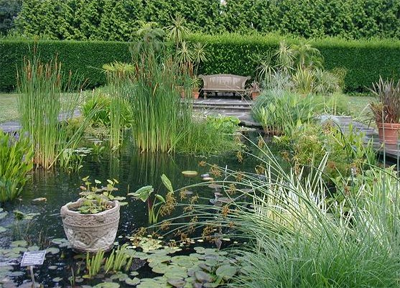Wild Life Gardening Tips

Wildlife gardening is aiming to create an environment in one’s garden that will attract wild forms of life such as insects, birds, reptiles, amphibians and mammals. Such a garden in not only a pleasure to spend time at viewing the natural beauty of the wild life, yet is also an important step of garden-holders to help living creatures survive in the worsening conditions of a global worming and pollution.
Why do we need wild gardens?
The global worming and other products of humans’ activities result in unprecedented droughts, floods, and freezes that erode the natural habitat of many living creatures. They are forced to adjust to new circumstances, yet not all of them are able to do so. Wild gardens even thought they are not very large in size in most cases, may become a shelter for these little creatures dependant on humans’ behavior.
Getting ready
So how can you take part in this action and get yourself a beautiful piece of the land that you will be able to enjoy yourself and share it with other creatures? That’s quite easy and the only necessary condition – a piece of the land. The more similar it will be to pre-existing ecology of the area, the better.
Do not expect to have an alligator come to live in your little pond, or a peacock nesting near your house. Most of the creatures that will come to live in your wild garden will be the natural inhabitants of that area. However, if you observe well, you’ll find that the population of your wild garden is rather diverse: frogs, toads, small fish and dragonflies in the pond, bees, spiders, beetles, birds and hedgehogs and lizards – and that’s not it!
Wild-gardening tips
One of the most important rules when creating the new habitat for wild creatures – do not use pesticides in your garden – they can kill many insects, which in their turn attract birds, spiders and even mammals. Use only organics, and soon you will be pleased to see a robin, wren, a hedgehog or a shrew coming to live nearby. Pesticides may also hurt bees, butterflies and other enjoyable insects, so mind that as well.
Plant many wildflowers, which attract insects. Some flowers are very beneficial to your wild garden. They bloom for a long time, and yield abundant nectar and pollen. They also often look very nice. One example is Joe-Pye weed, Goldenrod. They can by themselves support the whole community of insects and small vertebrates. When choosing other plants for your wild garden, consider to choose from high-yielding nectar plants. This is a simple rule – the more nectar can be produced, the more attractive your garden is for wildlife.
If you would like to attract more birds to come to live at your garden, plant more trees. This is preferable that you plant a native tree, such as birch or rowan. However, apple and peach trees, as well as other trees providing seeds and fruits will be attractive to birds as well. They will definitely come to the place where they can find shelter, perching and roosting place and food. A native hedge consisting of blackthorn, hawthorn, roses, hazel, and dogwood will also attract more birds. Don’t be surprised if you will soon find a hedgehog family in your garden’s hedge. It will also help to set some nesting boxes for birds in the garden and find a cool place to set a bat box and a log pile.
One great advice is to find a place for a pond. Even little water in the garden will help as it will be a place of settlement of many little creatures such as toads, dragonflies, fish and frogs. You’ll also se that birds and animals like to have some water nearby as well.
Don’t forget that all creatures have equal importance to nature, so be tolerant to some insects or animals that you didn’t really like previously. Spiders can create some neat webs that look awesome in the morning. They will also attract wrens to your garden. Any tiny creature has its own beauty and serves other animals and insects. So be patient and welcome any creature that comes to live in your wild garden.









